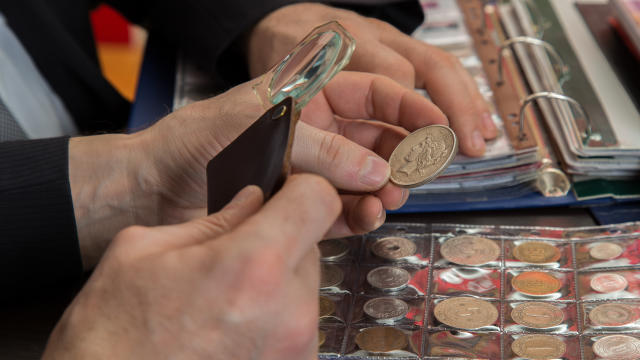The Walk-And-Turn Portion of the DUI Field Sobriety Test

The National Highway Traffic Safety Administration (NHTSA) made the Walk-and-Turn (and it’s twin sister the One-Leg-Stand) to fill in as “separated consideration tests” for individuals associated with DUI. They compare these requests of these tests to driving on the grounds that working an engine vehicle is in fact additionally a partitioned consideration task.

The Walk-and-Turn is partitioned into two phases: the Instruction Stage and the Walking Stage. During the Instruction Stage, the DUI suspect is approached to “take on the position”. The Officer’s directions as a rule go something like this:
“I need you to envision a line from X to Y. I need you to take your left foot and put it on that line. At that point, I need you to take your correct foot, place it before your left foot with your impact point contacting your toes. I need you to put your arms somewhere near your side and stay in this position while I give the guidelines. Keep up this situation until I have finished the directions. Try not to begin to stroll until advised to do as such. Do you comprehend the directions up until now?”
The motivation behind this “activity” is to test the DUI Suspect’s parity and to isolate his/her consideration while he centers around staying in this position AND spotlights on the directions the DUI Officer is going to give. DUI Suspects will commit errors, during the Instruction Stage, in the accompanying ways:
1) They’ll lose balance
2) They’ll start strolling before the DUI Officer is finished giving guidelines
The DUI Officer will at that point educate the DUI Suspect of what they should do to finish the Walking Stage of the Walk-and-Turn. The DUI Officer’s guidance’s generally go something like this:
“When I guide you to begin, make 9 heel-to-toe strides, turn, and make nine heel-to-toe strides back. (They ought to exhibit 3 stages). When you turn, keep your front foot on hold, and turn by making a progression of little strides with the other foot, this way. (They ought to show the turn) While you are strolling, keep your arms at your sides, watch your feet consistently, and forget about your means noisy. When you begin strolling, don’t stop until you have finished the test. Do you comprehend the directions? Start, and tally your initial step from the heel-to-toe position as ‘One’.”
DUI Suspects will commit errors, during the Walking Stage, in the accompanying ways:
1) They’ll stop after they’ve begun
2) They will neglect to contact heel to toe inevitably
3) They’ll venture off the line
4) They’ll utilize their arms to adjust (more than 6″ from their sides)
5) They’ll lose balance during their turn or turn erroneously
6) They’ll make the off-base number of strides
On the off chance that the DUI Officer watches ANY 2 OR MORE of the above “pieces of information”, he’s prepared to translate those outcomes to imply that the DUI Suspect has a blood liquor level of.10 or higher. Since there are 8 potential “pieces of information” it’s unimaginably simple for a DUI Suspect to show at least 2. Truth be told, for all intents and purposes each DUI customer I’ve at any point had neglected to play out the turn accurately.
Approaches TO CHALLENGE THE WALK-AND-TURN
To begin with, DUI Officers are prepared to guarantee a DUI Suspect is permitted to play out this assessment on a sensibly dry, hard, level and non-tricky surface. They ought to have adequate space to finish every one of the 9 heel-to-toe steps.
NHTSA research has demonstrated that anybody beyond 65 years old, or those with back, leg or inward ear issues experience issues playing out the test stone calm.
Anybody wearing impact points 2″ or taller ought to be permitted to take off their shoes to play out the test shoeless.
The Walk-and-Turn, without anyone else, is just 68% exact, under controlled conditions, at assessing somebody’s blood liquor level.
Most DUI Officers have had such a great amount of training at gushing the directions that they speed through them all around rapidly. Giving a jury similar directions, at a similar speed, and requesting that they go precisely play out the test in the consultation room can be an incredible asset for any DUI Defense Lawyer.
Frequently the DUI Officers haven’t had boost preparing in YEARS! It’s suggested they get a boost at regular intervals. Therefore, a large number of these officials have sorta overlooked the precise wording of the “hint” they should watch and checking. For instance, there’s actually nothing in the guidelines on which foot to start strolling with. While it’s most normal for your initial step to be with your back foot, some DUI Suspects may pay attention to the fanciful line very and begin with their front foot. This isn’t a “hint”. In any case, the capturing official will likely show it as one and use it as a reason for capturing you.
The video of your Field Sobriety Test can be your closest companion or your most noticeably terrible foe. In the event that your “signs” are effectively detectable by the jury and profoundly misrepresented (ie utilizing arms to adjust and influencing from side to side) it tends to be exceedingly hindering to your case. Then again, if the “intimations” are troublesome or unimaginable for the jury to watch, (for example, regardless of whether you really contacted mend to-toe on each of the 18 stages) they will in general negligence such signs. Toward the day’s end, a great first rate Walk-and-Turn on video can be persuading as it is proof of your capacity to perform isolated consideration tests… like driving a vehicle.



